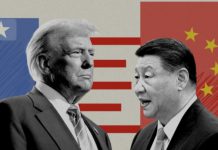
Pakistan & India converted to an assumed Arch-rival’s from the day first when both neighbouring states came into existence on the map of world, as sovereign independent states. Initial tragic incidents, further infuriated both Neighbours bilateral relations. With growing deficit of mistrust, changing regional & global unkind dynamics , territorial disputes, plethora of falls propagation , fire & Fury approach, incendiary statements from both countries military-Civil leadership incessantly ignited situation reciprocatically with the passage of time.
Cursory comparison of both countries nuclear doctrines & their conventional & Non-conventional capabilities. Some facts & Fiction which amplified both countries priorities in pure military domains.
India:
Indian nuclear programme was conceived in the pre- independence era of small group of scientists. India accelerated its nuclear programme as for ambitious purposes after China successfully detonated its first nuclear explosive device .India growing fear from China’s conventional & Non-conventional superiority paved the way for Indian policy makers strategic experts to acquire nuclear weapons capability. India first nuclear detonation was carried out in Pokran region near to Pakistani Border named it Smiling Bhudda ( Atom for Peace ) .
India didn’t enunciate its nuclear doctrine before 1998 due to its less advanced nuclear programme & minimum imminent threat from neighbouring foes Pakistan & China .India published an official nuclear doctrine on 4 2003 which was then made public with following key Points.
1:credible minimum deterrence
2:No first use but will be used against nuclear weapons state
3: civil political leadership only can authorise these retaliation attacks
4:non- nuclear state will not be hit but in case of major attack India will have the option to retaliate massively
5: strict control on the fissile material & following the declaration of FMCT .
6: will strictly follow nuclear free world on nondiscriminatory bases.
India striving hard to come in parity with China as well. India nuclear ambition is not only Pakistan centric but she is confronting on two loopholes Pakistan & China. India consider themselves as regional Power its growing military postures indicates future desire of India to maintain balance of Power with its rival neighbours.
Nuclear weapons without delivery means is futile. India also has clumsy ballistic missile program . India trying to equipped its military with Triad- land, Air, Sea based Missile system includes SRM,LRM,ICBM,and ADM . India posses enough stockpiles of short, medium, & long range missile defense system. India spend large portion of its GDP on military expenditures. After several small level skirmishes with Pakistan K Sundarji led operation Barastacks , Kargil War ,Siachin quagmire & 2001attack on Indian parliament’ which carried out by a terrorist group.India Denounced Pakistan for alleged involvement. Both countries were in escalating condition, India started mobilisation of military troops toward Pakistani border which takes more than three weeks. India came with new strategy CSD to counter any possible attack from Pakistan with punitive measures .Cold start doctrine was meant to avert direct nuclear clash & to Gain desired goals against enemy. It was the glaring security issue for Pakistan .
India is the 2nd largest importer of Arms in the world. India Major arms partners are Russia, US,Israel ,France & Britain. India increasing military expenditures’ billion dollars arms deals with Major Powers are considerable fear to Pakistani national security. US India civil nuclear deal in 2005 despite Non signatury of NPT , S400 from Russia, Raffale aircrafts deal with France & growing military partnership With Israel will further accelerate Arms race in the region.
Pakistan.
Hostile relations with India from the day birth 1965 war, tragic event of 1971 BD & India nuclear detonation in 1974 pushed Pakistan ahead to acquire nuclear capability . Pakistan nuclear program was led by ZA Bhutto with his fame words. We are now in thousands year’s war , we will acquire nuclear capability either we have to eat grass . Pakistan started its nuclear program in extremely unfavourable condition before USSR invaded Afghanistan. It was the cold war era, Containment of Communism & USSR .Pakistan got ample opportunity and covertly started uranium enrichments .according to Dr Qadir prominent Nuclear scientist Pakistan was ready for Cold nuclear detonation in 1984-85.
Overt unclearialisation of both countries in 1998 finally gave Nuclear Parity to Pakistan.
Pakistan always opted Action reaction policy Against india with its staggering economic conditions & minimum resources. After successful detonation of Nuclear explosion Pakistan ensured non-conventional capability with ” more is unnecessary while little is enough ”
Pakistani nuclear doctrine is undeclared, its has three distinct policy objectives.
1: deter a first nuclear use of India
2: enable Pakistan to deter Indian conventional attack
3: Pakistan principally adopt the option of ‘ credible Minimum Deterrence ” this concept is the central pillar of Pakistan nuclear program.
Ambiguity in nuclear Doctrines is the central strategy of very Nuclear weapons states
General (R) Kahlid Kudwai further elaborated Pakistani nuclear doctrines with these fours significant thresholds.
1: Pakistan will use its nuclear weapons in case of huge territorial loss
2: in case of Economic strangulation
3: large scale internal subversion
4: destruction of large part of land or air forces.
Pakistan & India pursue the same strategy to indulge enemy in perpetual tenable guessing. Pakistani missile program is purely designed Against India . Pakistan posses SRM,MRM, & TNW . Pakistan spends its large amount on its nuclear program, Conventional weapons to counter India military posture. Pakistan countered India CSD with NTW . After multi billion dollars deal with Russia Pakistan successfully launched its MIRVs Ababeel missile to counter S400 anti Missile system.
Pakistan indigenously developed Tanks, (Alkhalid ,Alzarae )fighter jets,( Mashak trainer ,J717 thunder ) drones ( Buraq , ) for growing military requirements.
Conclusion :
Pakistan & India vehemently increasing its nuclear stockpiles. Due to China factor India will not abandon its nuclear Weapons if any development take place between Pakistan & India in near future. US want to contain China military maneuverabilities in Indo Pacific region. 2005 Indo US civil nuclear deals & US support for Indian membership in NSG indicates Future assessments of nuclear arms race. China support to Pakistan in civil nuclear field will further intensify arms race in the region. Kashmir is a lingering testimony of Nuclear flash point between two nuclear weapons states.
Way forward :
1: Pakistan & India should resolve their bilateral issues with dialogue & mutual consent .
2: Pakistan should abandon its India centric maneuverability due to scarce resources & staggering economic conditions .
3: major Powers must shunned their war based industrial policy.
4: both countries should start trade activities, people to people contact, cultural diversification.
5: CBM between military & civil leadership .
6: mutual harmony, fraternity, cooperation, tranquillity at mass level, .
7: Change in behaviour, change in mind set. Both countries executioners of security policies must stop action reaction, bit by bit approach .
8: education, health, economic prosperity is more lucrative, more desirable, more akin than weapons, .
An ugly stick is more important than a Piece of Morsel.
Lets Peace prevail in the region.
Qaiser Mahmood undergraduate’ student of international relations, International Islamic University Islamabad. The views and opinions in this article belong to the author and do not necessarily reflect the editorial policy of Millat Times.
















